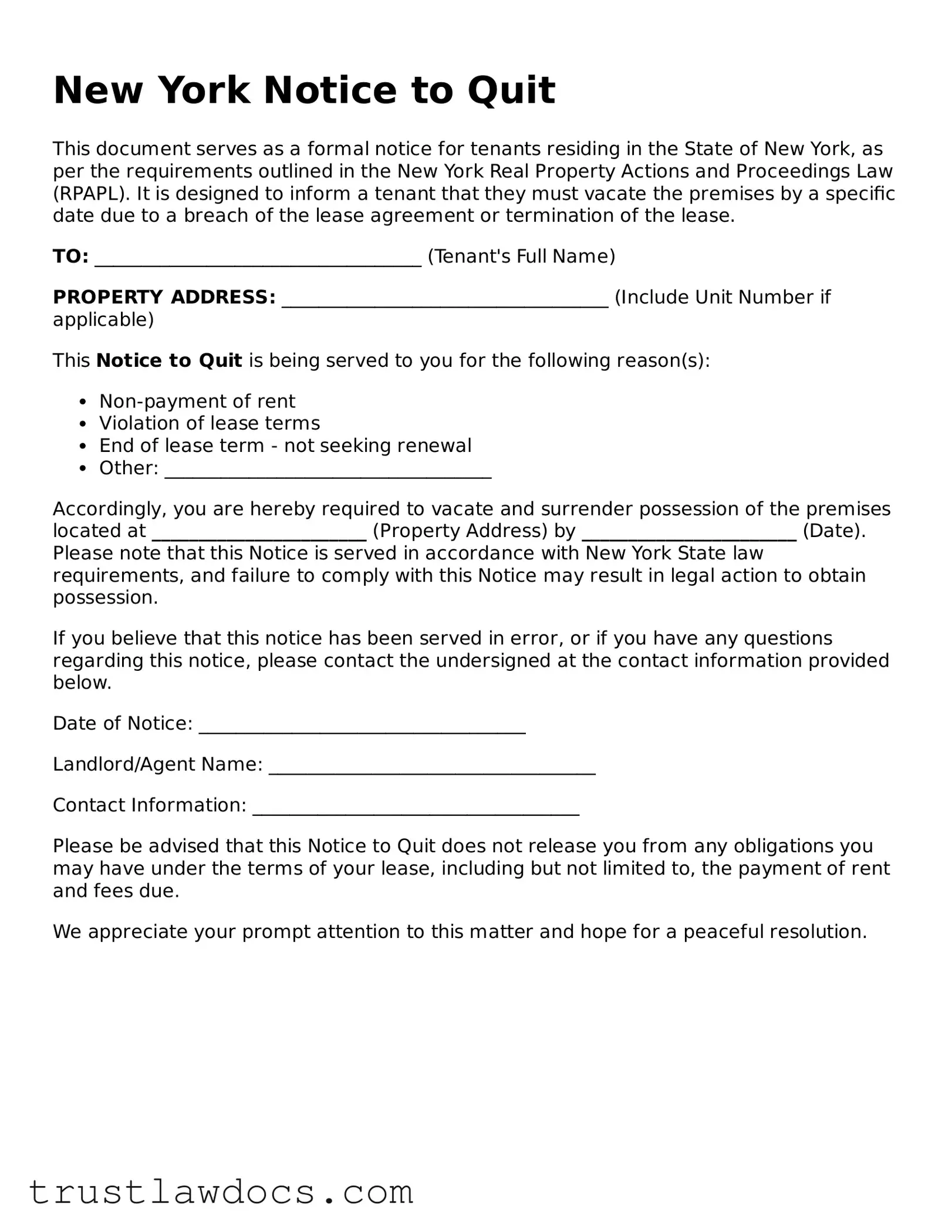What is a New York Notice to Quit?
A New York Notice to Quit is a legal document that a landlord sends to a tenant to end the tenancy. It's required when a tenant has violated the lease agreement or has not paid rent. This notice gives the tenant a set amount of time to either correct the issue or vacate the property.
When is it necessary to use a New York Notice to Quit?
This notice is necessary when a tenant in New York either fails to pay rent on time, violates terms of the lease agreement, or engages in illegal activities on the property. It officially starts the eviction process if the tenant does not comply with its terms.
What should be included in a New York Notice to Quit?
The notice should include the date, tenant's name and address, a detailed explanation of the lease violation or rent amount overdue, the deadline by which the tenant must remedy the situation or vacate, and the landlord’s signature. It might also include information on the legal actions that will be taken if the tenant fails to comply.
How much notice must be given to the tenant?
The required notice period varies depending on the reason for eviction. For non-payment of rent, landlords must give at least 14 days' notice. For lease violations, a 30-day notice is typically required. It's essential to check current New York laws as these requirements can change.
Can a tenant dispute a New York Notice to Quit?
Yes, a tenant can dispute the notice. If the tenant believes the notice was given unfairly or the facts are incorrect, they can go to court to challenge the eviction. During this process, they will have the opportunity to present their case and any supporting evidence to a judge.
How should a New York Notice to Quit be delivered to the tenant?
For the notice to be legally valid, it must be delivered in a manner that complies with New York state law. This often means handing it directly to the tenant, leaving it with a responsible person at the residence, or mailing it via certified mail to ensure there is a record of delivery.
What happens if a tenant ignores a New York Notice to Quit?
If a tenant ignores the notice and does not remedy the violation or vacate the property by the deadline, the landlord can file for eviction with the court. A judge will then hear the case, and if found in favor of the landlord, the tenant will be legally obligated to leave the property.
Does a landlord need a lawyer to send a New York Notice to Quit?
While it's not required for a landlord to use a lawyer to send a Notice to Quit, consulting with one can be helpful, especially in complex situations. A lawyer can ensure the notice complies with all legal requirements and can offer guidance on the eviction process.
Is there a difference between a New York Notice to Quit and an Eviction Notice?
Yes, there's a difference. A New York Notice to Quit is the first step in the eviction process, giving the tenant a chance to remedy the situation or leave. An eviction notice, or eviction order, is a court order that comes after the notice period has ended and the landlord has taken legal action. It requires the tenant to vacate the property by a specific date.
What rights do tenants have after receiving a New York Notice to Quit?
After receiving a Notice to Quit, tenants have the right to correct the situation within the given timeframe, dispute the eviction in court, or move out voluntarily. They also have the right to legal representation during the eviction process and may have access to certain protections depending on the local laws and if they qualify as a protected class of tenant.
